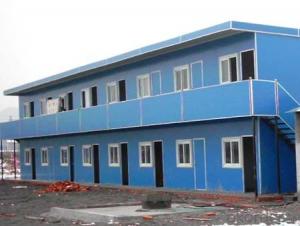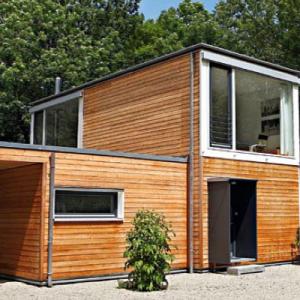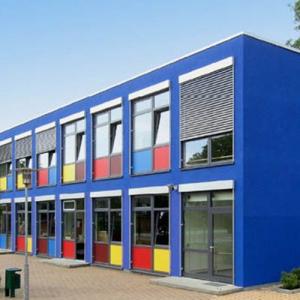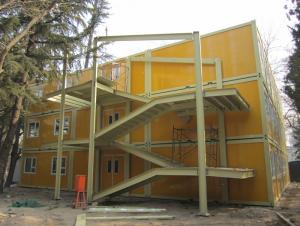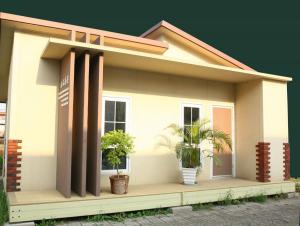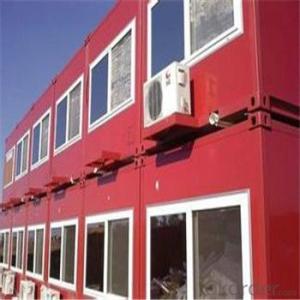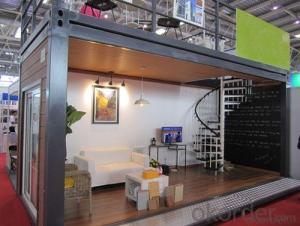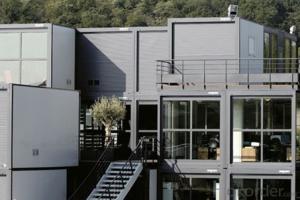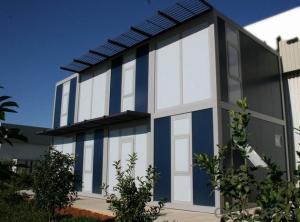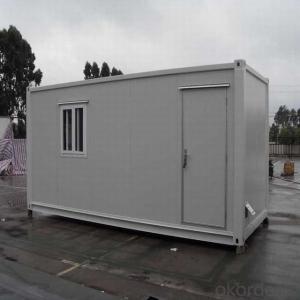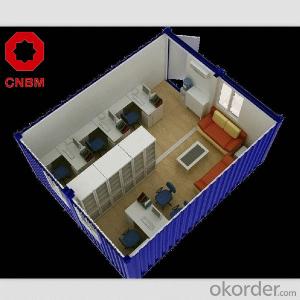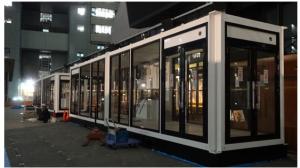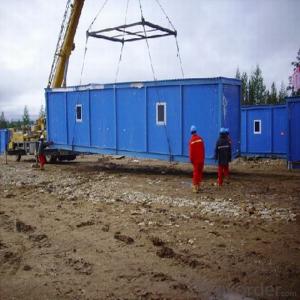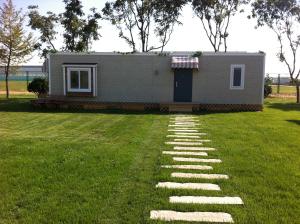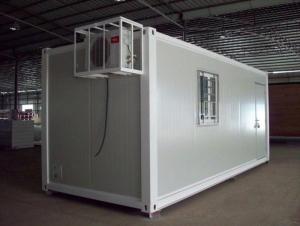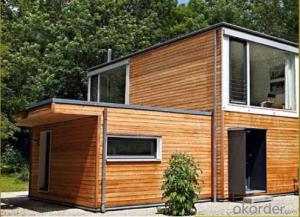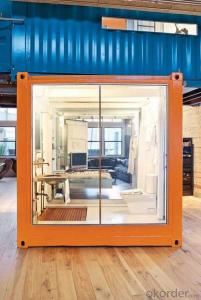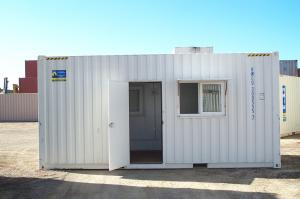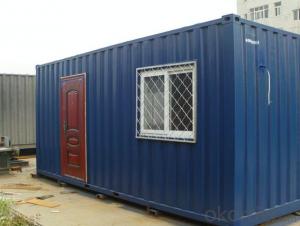Container House Good Quality with High Quality
- Loading Port:
- Tianjin
- Payment Terms:
- TT OR LC
- Min Order Qty:
- 3 set
- Supply Capability:
- 500 set/month
OKorder Service Pledge
OKorder Financial Service
You Might Also Like
Container House Good Quality with High Quality
1. The benefits of Container House
Perfect for modular/prefab site offices,cabins,warehouse,villa,toliet,shop,hotel,camp,office
Efficient, low cost designs that can be customized for end user requirements
Easy for low skilled workers to assemble
The light steel frame structure is strong and reliable
Many modular homes can be stacked and linked together to create more space
Neat inside: plumbing and wires are hidden into the sandwich panel
2. Certificates:
ISO9001, ISO14001, CSA(Canadian Standards Association), CE(European Conformity), AU(Australia Standard),UL(America standard)
FAQ:
1.How about the installation? For example, the time and cost?
To install 200sqm house needs only 45 days by 6 professional workers. The salary of enginner is USD150/day, and for workers, it's 100/day.
2.How long is the life span of the house?
Around 50 years
3. And what about the loading quantity?
One 40'container can load 140sqm of house.
The cabin can be dis-assemebled for transport.
Images:
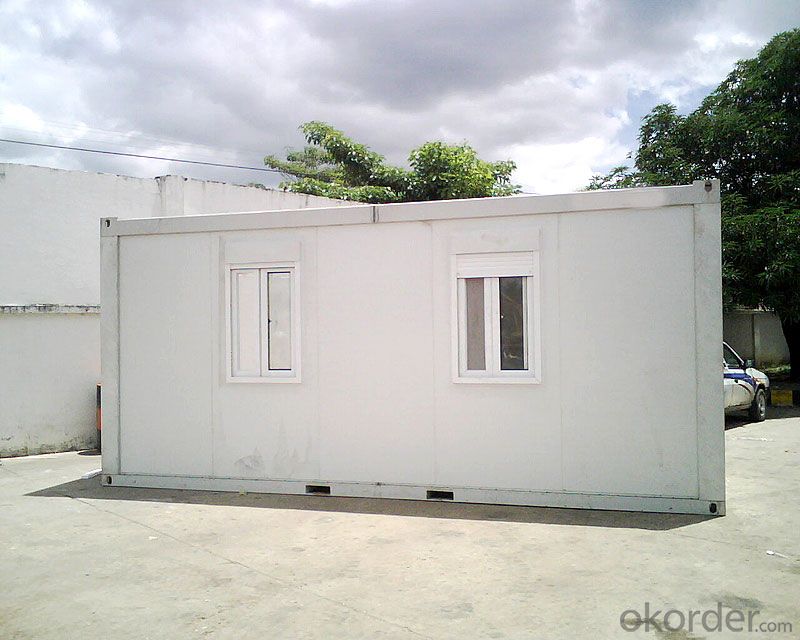
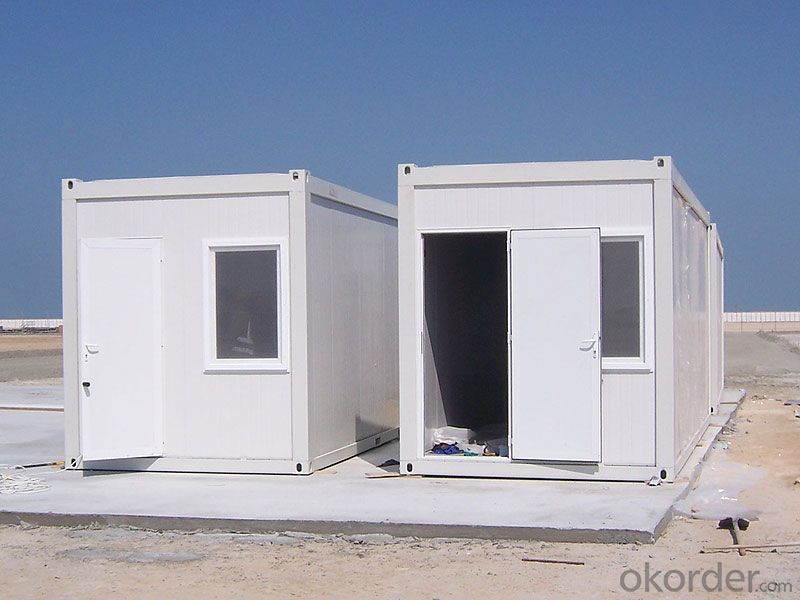
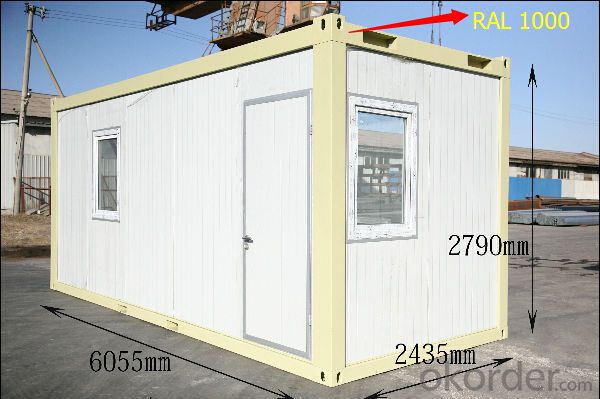
- Q: Can container houses be designed to have a laundry room?
- Yes, container houses can definitely be designed to have a laundry room. While the space in a container house is limited, creative designs and efficient use of space can allow for the inclusion of a laundry room. Various options can be considered to accommodate a laundry area, such as incorporating a stackable washer and dryer unit in a designated corner, utilizing a compact combination washer and dryer, or even installing a small laundry room separate from the main living area. Additionally, clever storage solutions can be implemented to maximize the functionality of the laundry area, such as using wall-mounted cabinets or shelves for laundry supplies. With proper planning and innovative design, container houses can indeed feature a functional and convenient laundry room.
- Q: Are container houses suitable for areas with limited access to public transportation?
- Indeed, container houses prove suitable in areas with restricted access to public transportation. Given their modular nature, they can be effortlessly transported to remote locations, rendering them a viable residential option where public transportation is scarce. Furthermore, these container houses can be designed to operate independently and off the grid, diminishing the reliance on public transportation for essential services such as electricity and water. By equipping them with solar panels and rainwater collection systems, their sustainability in regions with limited infrastructure is further augmented. Moreover, container houses can be tailor-made to meet the specific requirements of the occupants, ensuring their comfort and provision of all necessary amenities even in locales devoid of convenient public transportation. Ultimately, container houses present a flexible and pragmatic housing solution for areas with constrained access to public transportation.
- Q: Can container houses be designed with a wheelchair-accessible layout?
- Certainly, a wheelchair-accessible layout can indeed be incorporated into the design of container houses. The adaptability and versatility of container houses offer the opportunity to create a space that specifically caters to the needs of wheelchair users. When contemplating the design of a wheelchair-accessible container house, various factors must be taken into account. Firstly, it is imperative to ensure that the entrance and exit points are equipped with ramps or lifts to guarantee effortless accessibility for wheelchair users. Moreover, the width of doorways and hallways should be sufficiently wide to accommodate wheelchairs. The interior layout should be characterized by openness and spaciousness, facilitating easy maneuverability. The kitchen and bathroom areas can be designed with lower countertops and sinks, along with the inclusion of grab bars and handrails to provide additional support. Moreover, it is crucial for the flooring to be smooth and level throughout the container house, enabling seamless movement for wheelchair users. Adequate lighting and strategically positioned switches at an accessible height are also essential for effortless navigation. Furthermore, technological advancements can be integrated into the design to enhance accessibility. For instance, automated doors, smart home systems, and voice-activated controls can greatly enhance the convenience of daily activities for wheelchair users. Ultimately, with meticulous planning and thoughtful consideration, container houses can be designed to be wheelchair-accessible. By prioritizing functionality and incorporating accessible features, container houses have the potential to offer a comfortable and inclusive living space for individuals facing mobility challenges.
- Q: Are container houses suitable for medical clinics?
- Container houses can be suitable for medical clinics, depending on various factors. Container houses offer several advantages that make them a viable option for medical clinics. Firstly, container houses are cost-effective compared to traditional brick and mortar buildings. Medical clinics often have limited budgets, and container houses provide a more affordable alternative without compromising quality. The construction process is faster, reducing labor costs, and the materials used are generally less expensive. Secondly, container houses are highly customizable and can be modified to meet the specific requirements of a medical clinic. They can accommodate different medical equipment, provide separate spaces for consultation rooms, waiting areas, and administrative offices, and can be equipped with proper ventilation, plumbing, and electrical systems. Furthermore, container houses are portable and can be easily relocated if needed. This flexibility is beneficial for medical clinics that may need to change their location due to population shifts or changes in demand. Additionally, container houses can be expanded or downsized as per the clinic's needs, allowing for future growth or contraction. However, there are some limitations to consider. Container houses may have limited space compared to traditional buildings, which may restrict the size of the medical clinic and the number of services it can offer. Additionally, container houses may require additional insulation and modifications to meet healthcare regulations and standards. In summary, container houses can be suitable for medical clinics, especially for those with budget constraints or a need for flexibility. However, a thorough analysis of the specific needs and requirements of the clinic should be conducted before making a final decision.
- Q: Are container houses resistant to wildfires?
- Container houses are capable of being designed in a way that makes them resistant to wildfires. By utilizing steel containers as the primary structural element, they inherently possess a greater degree of fire resistance compared to traditional wooden houses. The higher melting point of steel means that it takes a longer time for it to ignite. Additionally, the walls and roof of container houses can be strengthened with fire-resistant materials like cementitious siding or metal cladding, further enhancing their ability to withstand wildfires. Moreover, container houses can incorporate fire-resistant insulation and double-pane windows, which serve to prevent the spread of flames and limit the entry of sparks or embers. Fire-resistant doors and shutters can also be installed to safeguard the house's entrances. Nevertheless, it is crucial to acknowledge that no structure can be completely immune to fire, and the resistance of a container house to wildfires is also influenced by factors such as its location, surrounding vegetation, and the intensity of the fire. In exceedingly severe wildfire conditions, no building type can ensure absolute safety. Therefore, effective planning, landscaping, and regular maintenance are vital in reducing the risk of wildfires and mitigating their potential impact on container houses.
- Q: How do container houses compare to modular homes?
- Both container houses and modular homes have gained popularity as alternatives to traditional, site-built houses, but there are several important differences between them. Container houses are created by repurposing and modifying shipping containers to create livable spaces. They are renowned for their durability, as shipping containers are designed to withstand harsh transportation conditions. However, due to their limited size and shape, container houses often have a more compact and minimalist design. They are also typically more affordable compared to modular homes because the containers themselves serve as the structural foundation. On the contrary, modular homes are constructed in sections, or modules, in a factory and then transported to the building site for assembly. These modules are usually larger and more customizable than shipping containers, allowing for a wider variety of floor plans and designs. Modular homes provide greater flexibility in terms of size, layout, and finishes, making them more similar to traditional homes. Additionally, modular homes are typically built to meet local building codes, ensuring compliance with safety and quality standards. Regarding cost, container houses are generally more affordable upfront due to the lower cost of shipping containers. However, modular homes often have a higher resale value and may offer better long-term investment potential. Modular homes also tend to be more energy-efficient and provide better insulation compared to container houses. Ultimately, the decision between container houses and modular homes depends on individual preferences, budget, and specific needs. Container houses are ideal for those seeking a unique, minimalist design and lower initial cost, while modular homes offer more customization options and a closer resemblance to traditional homes.
- Q: Can container houses be designed to have a meditation space?
- Yes, container houses can be designed to have a meditation space. With proper planning and creative design, containers can be transformed into tranquil and peaceful spaces that cater to meditation and mindfulness practices. The flexible and modular nature of container houses allows for customization, enabling the inclusion of features like large windows for natural light, soundproofing for a serene environment, and minimalist interiors to promote a sense of calm.
- Q: Can container houses be built in coastal areas?
- Container houses can indeed be constructed in coastal areas. These houses are fashioned from shipping containers, which are specifically designed to endure harsh conditions such as strong winds, saltwater, and corrosion. This makes them well-suited for coastal environments where exposure to saltwater, powerful winds, and other weather elements is likely. However, it is crucial to take specific precautions when erecting container houses in coastal regions. For instance, employing proper insulation and ensuring thorough sealing of the containers can safeguard them from the corrosive effects of saltwater. Moreover, it is essential to utilize appropriate foundation and anchoring systems to guarantee stability and resistance against forceful winds and potential flooding. By implementing these measures, container houses can be a practical and long-lasting housing option in coastal areas.
- Q: Can container houses be designed for commercial use?
- Yes, container houses can definitely be designed and used for commercial purposes. Container houses have gained popularity in recent years due to their versatility, affordability, and sustainability. These structures can be modified and customized to suit various commercial needs, such as offices, retail spaces, restaurants, cafes, art studios, and even hotels. Container houses are easily adaptable and can be expanded or combined to create larger spaces. Their modular nature allows for flexibility in design and layout, making them an ideal choice for commercial use. Additionally, container houses can be easily transported to different locations, enabling businesses to move or expand as needed. With proper insulation, ventilation, and interior design, container houses can provide a comfortable and functional environment for commercial activities. They can also be equipped with all the necessary amenities, such as electricity, plumbing, heating, and air conditioning systems. Furthermore, container houses offer cost savings compared to traditional construction methods. They are typically less expensive to build and can be repurposed from used shipping containers, reducing material waste and environmental impact. In conclusion, container houses can be effectively designed and utilized for commercial purposes. They offer a unique and sustainable solution for businesses looking for affordable and flexible spaces.
- Q: Are container houses suitable for religious or spiritual retreats?
- Yes, container houses can definitely be suitable for religious or spiritual retreats. These unique structures offer a variety of advantages that make them appealing for this purpose. Firstly, container houses are often designed to be eco-friendly, which aligns well with the values of many religious and spiritual retreats centered around sustainability and harmony with nature. In addition, the modular nature of container houses allows for flexibility in design, enabling retreat organizers to create spaces that are conducive to meditation, reflection, and prayer. Container houses can also be easily transported to remote or secluded areas, providing retreat participants with a serene and peaceful environment. Furthermore, the affordability of container houses compared to traditional buildings can make religious or spiritual retreats more accessible to a wider range of individuals. Overall, container houses offer a practical and innovative solution for creating meaningful and sacred spaces for religious or spiritual retreats.
Send your message to us
Container House Good Quality with High Quality
- Loading Port:
- Tianjin
- Payment Terms:
- TT OR LC
- Min Order Qty:
- 3 set
- Supply Capability:
- 500 set/month
OKorder Service Pledge
OKorder Financial Service
Similar products
Hot products
Hot Searches
Related keywords
